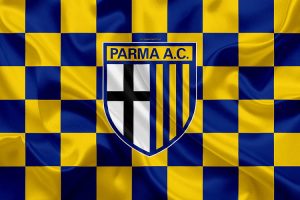Professional Footballers Gym Workouts: Train like your Favorite Stars
To help professional football players reach peak physical condition to perform at their best on the field, clubs and personal trainers resort to improve players’ physical fitness, endurance, and build strength. As a professional player, you need to understand the importance of a well-rounded gym workouts for football players. In addition to regular training sessions, gym workouts play an important role in improving athletic performance, preventing injuries, and optimizing recovery.
In this article, I will outline the key elements of a successful football player gym workout, including what to focus on, the difference between regular gym sessions and pro football player gym sessions, and pre and post-game routines. We will discuss the key principles of gym workouts for professional football players, including functional movements, injury prevention, speed and endurance, power and explosiveness, and recovery and regeneration.
Functional Movements Gym Workouts
Functional movements are exercises that increase general body strength and coordination while simulating the demands of a sport. Squats, lunges, deadlifts, bench presses, pull-ups, push-ups, plyometrics, agility drills, and core workouts are just some examples of functional movements for football players. Jumping, landing, cutting, and sprinting are a few of the key skills that these exercises aid in improving. Football players should concentrate on functional exercises that target the quadriceps, hamstrings, glutes, calves, and core, which are the muscles used most frequently in the game. Meanwhile, upper body muscle groups strength training should not be overlooked since it plays a massive role in overall strength and physical duals during the game. In addition, professional players incorporate a lot of single side exercises to create that ability to work with unbalanced positions especially single leg exercises. More often than not, players will use off set movements in different challenges. That said, training single side functional movements is considered a staple in physical conditioning.
Speed and Endurance Gym Workouts
In order to outpace opponents and cover a large portion of ground on the pitch, pro football players need to be quick and nimble. Their gym routines therefore should include exercises that boost stamina, speed and agility. These include high-intensity interval training (HIIT), sprints, hill runs, and cardio exercises such as cycling and rowing. These workouts serve in enhancing football play by increasing aerobic capacity, muscular endurance, and cardiovascular fitness.
It is vital to understand that stamina has an equally important side to it. Training to defeat exhaustion mentally goes hand in hand with physical endurance. Understanding that pain and tiredness is temporary and getting used to maxing out while drained and worn can be the difference between winning and losing. Ironically, some players get injured because their desire to win is stronger than their physical condition. They push their own limits until their bodies protest.
Professional Footballers Injury Prevention Gym Workouts
Football players are susceptible to a variety of injuries, including joint sprains, ligament tears, and muscle strains. As a result, exercises that reduce the risk of injury should be included in gym routines. Warm-up drills, mobility drills, stretches, foam rolling, and balance drills are a few of them. Since the knees, ankles, and hips are the parts of the body that sustain injuries the most frequently in football, players should also concentrate on strengthening these muscles. The reason these parts are more vulnerable than others, it because they are pivot points for body movement while depending only on soft tissues. As time goes, science developed better technologies when it comes to surgeries and rehabilitation. But for football players, preventing injuries should be their first goal in order to maximize performance and minimize long-term harm. Repeated injuries become harder and slower to recover. With limited time in the game, players want to make sure they can capitalize. This is the reason you see world stars routinely doing such sessions even during season breaks.
Power and Explosiveness Gym Workouts
To jump higher, move quicker, and strike the ball harder, football players need to be explosive and strong. As a result, their gym routines consist of many exercises that promote power and explosiveness. They include plyometrics, box jumps, medicine ball throws, and Olympic lifts like the clean and jerk. These workouts help you build snappy physical reactions and aid in developing football performance-related skills such as explosive strength and power output, and rate of force generation. I remember how Anaerobic capacity was the revelation for me at early age. It has turned me from a pint sized player who rely solely on technical ability to a player who has physical power and confidently going for physical challenges against aggressive big defenders. A great example of how this part of training can be a game changer is the Italian World Cup and Ballon D’Or winner Fabio Cannavaro. He wasn’t by any means a physically big defender, but his ability to jump higher than most and win physical duals, made him one of the best defenders in history.
Recovery and Regeneration Gym Workouts
Recovery and regeneration are also important for professional football players. Football players need to be able to recover quickly from games and training sessions in order to maintain high levels of performance. Therefore, their gym workouts should also include exercises that promote recovery and regeneration. These include cool-down exercises, stretching, foam rolling, massage, and active recovery such as swimming or cycling. In addition, football players should also focus on proper nutrition, hydration, and sleep, as these are also critical factors for recovery and regeneration.
Pre-Game Routines
Football players should warm up thoroughly before games with plyometrics, mobility drills, and dynamic stretching to get their bodies ready for the physical demands of the game. Depending on which school training staff is following, these exercises can be done on game day and/or a day earlier. As usual, we can’t overlook the mental part. In order to calm their tensions and improve focus, football players should also concentrate on mental preparation, visualization, and breathing exercises. Players can perform at their highest level and lower their risk of injury with the right preparation.
Post-Game Routines
In a bid to reduce muscle soreness and speed up recovery, football players’ post-game regimens often consist of a cool-down exercise that includes static stretching, foam rolling, and light cardio. In order to maximize recovery, football players should also pay attention to good diet, hydration, and rest. This include getting enough protein into the diet to rebuild and repair muscles, drinking enough water as well as electrolytes to replenish fluids lost during exertion, and sleeping sufficiently to allow the body rest and recover.
In conclusion, professional football players need to incorporate gym workouts into their training regimen to improve their athletic performance, prevent injuries, and optimize recovery. The gym workouts should focus on functional movements, injury prevention, speed and endurance, power, and explosiveness, as well as recovery and regeneration. Pre and post-game routines should also be incorporated to help players prepare for and recover from games. By following these principles, professional football players can achieve their goals on the field and guarantee a level of longevity in this intense sport.








